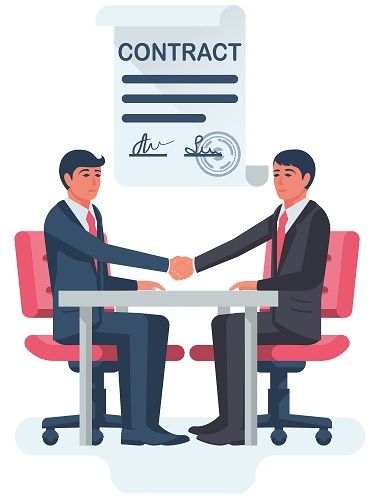 Inside Sales is a sales model that makes use of technological interactions to connect with potential customers. This may include contacting customers via email, phone, chat, video conferencing, etc. On the other hand, in the case of outside sales, the sales representative must travel frequently to meet potential clients, sell the products and services directly and develop lasting professional relationships.
Inside Sales is a sales model that makes use of technological interactions to connect with potential customers. This may include contacting customers via email, phone, chat, video conferencing, etc. On the other hand, in the case of outside sales, the sales representative must travel frequently to meet potential clients, sell the products and services directly and develop lasting professional relationships.
Though the outside sales workforce is more expensive than the inside sales workforce, outside sales personnel brings more clients and business to the firm.
In this post, we will explore the difference between inside sales and outside sales.
Content: Inside Sales Vs Outside Sales
Comparison Chart
| Basis for Comparison | Inside Sales | Outside Sales |
|---|---|---|
| Meaning | Inside Sales implies a sales process that takes place within the office premises. | Outside Sales refers to the sales process which occurs outside the office premises. |
| Involves | Prospecting clients | Building Relationships |
| Number of Clients | Lots of clients | Only a few clients |
| Strategy | Cold emails, cold calls, etc. | Networking during events |
| Requires | Working from office | Commuting to meet clients |
| Sales cycle | Short and transactional | Long and Relational |
| Product cost | Low | Comparatively high |
What is Inside Sales?
Inside Sales refers to the form of sales in which the sales personnel uses phone, email, chat or any other remote channel for selling products or services. Hence, there is no face-to-face contact between the sales personnel and the prospect.
The sales representative makes warm leads in inside sales; that is, he approaches those customers who:
- Have expressed their interest in the company or its product by clicking on an advertisement.
- Enquired about any product or service by visiting the store or over a chat/call/email.
- Signed up for newsletter and promotion.
Inside Sales is basically remote sales, i.e. it is carried out wholly from the office. The communication tools used in case of inside sales are:
- Phone
- VoIP
- Skype, Google Meet, Zoom
It is called inside sales because the sales personnel remains indoors, be it a call centre or company office. The sales personnel proactively contact potential customers and can participate in cold calling. The sales personnel uses leads from a number of sources and fosters connections with customers through regular and personalised contact.
Inside Sales is a good strategy for companies to reach a large pool of potential customers. It finds out, engages and converts prospects remotely.
Benefits of Inside Sales
- Cost Effectiveness: With Inside Sales, there is a benefit of no travelling cost, which reduces the company’s sales expenses.
- Convenience: The sales personnel connect with prospects from anywhere in the world, which makes it is a better option for both parties.
- Efficiency: Inside sales are useful in managing the time of the sales personnel more efficiently, as they can call or email in a limited span of time than they would with in-person.
- Scalability: Inside Sales can be increased more easily compared to outside sales, as the company can recruit new sales personnel and train them to perform inside sales.
- Access to Broader Market: The company can access a broader market as the sales representatives can get through prospective customers worldwide. This increases the reach and customer base as well.
Inside Sales Team
- Sales Development Representative: He/She is the one who qualifies the lead.
- Accounts Executive (AE): He/She closes the deal.
- Account Management: He/She manages customer relationship
- Customer Success Management: He/She provides overseas customer support.
Also Read: Difference Between Sales and Marketing
What is Outside Sales?
Outside Sales implies a form of sales which requires its sales representative to be more flexible to sell products and services in different locations. In this, the representatives must adjust the sales pitch as per the circumstances.
The job of an outside sales representative is to travel to meet clients and connect with the prospects, and foster relationships with them.
Outside sales professionals often perform the work autonomously, i.e. external to the typical office environment. They visit places to meet customers face-to-face and develop relationships with existing customers. They often work without any formal schedule.
It is a flexible job, but the salesperson remains engaged on call to fulfil the customer’s demands. This also involves maintaining a schedule of client meetings.
In outside sales, the sales reps often meet at a convenient place for the client; it could be the client’s office, cafe, conference hall or any other similar meeting location. They meet the clients before or after working hours to educate them about the product, provide product demonstrations and answer any queries.
Activities Involved in Outside Sales
- Conducting numerous sales calls and arranging a face-to-face meeting
- Researching and monitoring competitors and market
- Both develop and maintain the relationship with new and existing customers.
- Make sales of the product or service to customers within the given territory.
- Carrying out product demonstrations and explaining its benefits.
- Being the company’s face, sales personnel represent the company before clients.
Benefits of Outside Sales
- Better closing ratio: Studies have shown that sales representatives have a better closing rate than inside sales. If the company focuses on selling products and services with a high price point, then it is always better to personally meet the customer to persuade them.
- Greater motivation for making sales: We all know that sales personnel receive a commission for making sales. This commission is over and above the basic pay. Further, this commission can be a fixed amount or a percentage of the amount of sales made.
- Building better client relationships: It is quite obvious that it is a bit difficult to maintain connections remotely. In this way, outside sales often better impact the client, which helps build strong relationships.
- Personalized product demonstrations: The new or existing customers get a personalized sales experience with a very detailed product demonstration.
Also Read: Difference Between Personal Selling and Sales Promotion
Key Differences Between Inside Sales and Outside Sales
- Inside Sales refers to using technology to connect with and gain new customers without any need to travel. Outside Sales is when the sales representative engages with the clients and customers in the field.
- While inside sales is composed of the in-house sales team that focuses on bringing new leads and selling remotely. As against, outside sales comprises sales teams that travel to different places to meet clients and close the deal.
- Inside sales involve prospecting clients, in which the sales teams call a large number of prospects to convert them into actual buyers. In contrast, outside sales means developing and maintaining customer relationships by meeting them personally and showcasing product features and specifications.
- In inside sales, the sales representatives have to connect with hundreds of clients. Conversely, in the case of outside sales, there are only a few clients whom the sales representatives visit and explain their offering.
- Inside sales use cold emails and cold calls as a sales strategy. However, outside sales are based on networking with the clients during events and nurturing relationships with them.
- Inside sales requires the sales representatives to work from their office. But, outside sales, as the name suggests, require the sales personnel to travel to different places in order to meet clients and close the deal.
- While the sales cycle is short and transactional in inside sales, it is long and relational in the case of outside sales.
- In Inside sales, the cost of the product is low. Whereas, in outside sales, the product cost is high, so it requires the sales personnel to influence the client by demonstrating the product features and benefits personally.
Conclusion
Above all, a large number of companies use a combination of both sales strategies. While inside sales team finds out leads and hands over the list to field representatives for follow-up. For this, the company needs to consider the product and buyer persona to ascertain whether the company would need to implement either or both sales strategies.






Leave a Reply